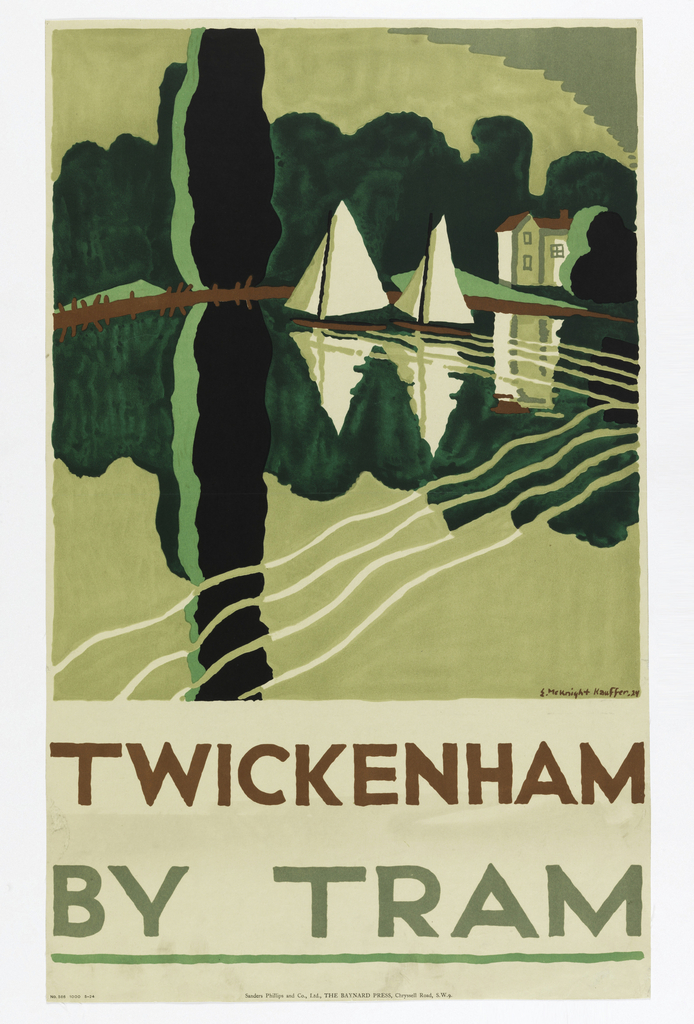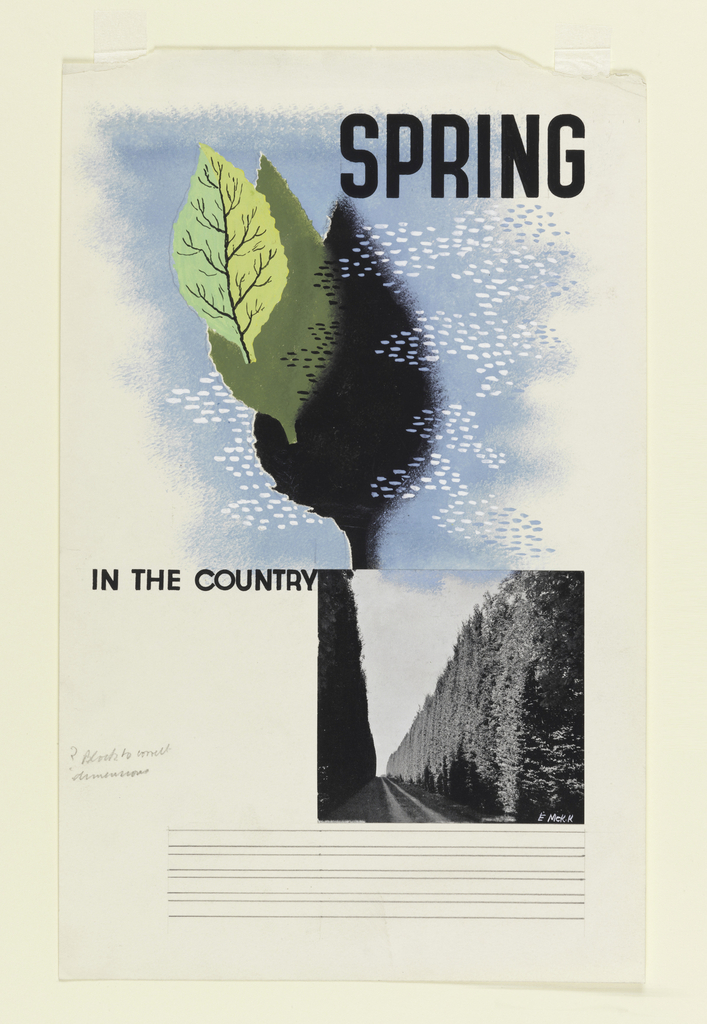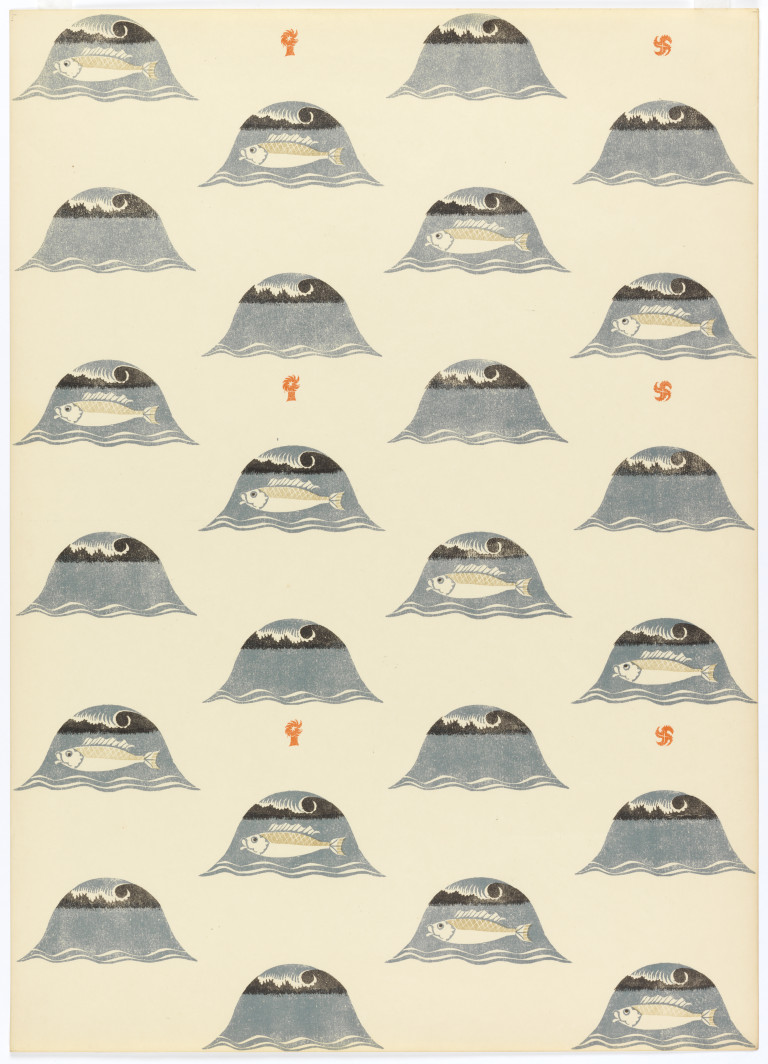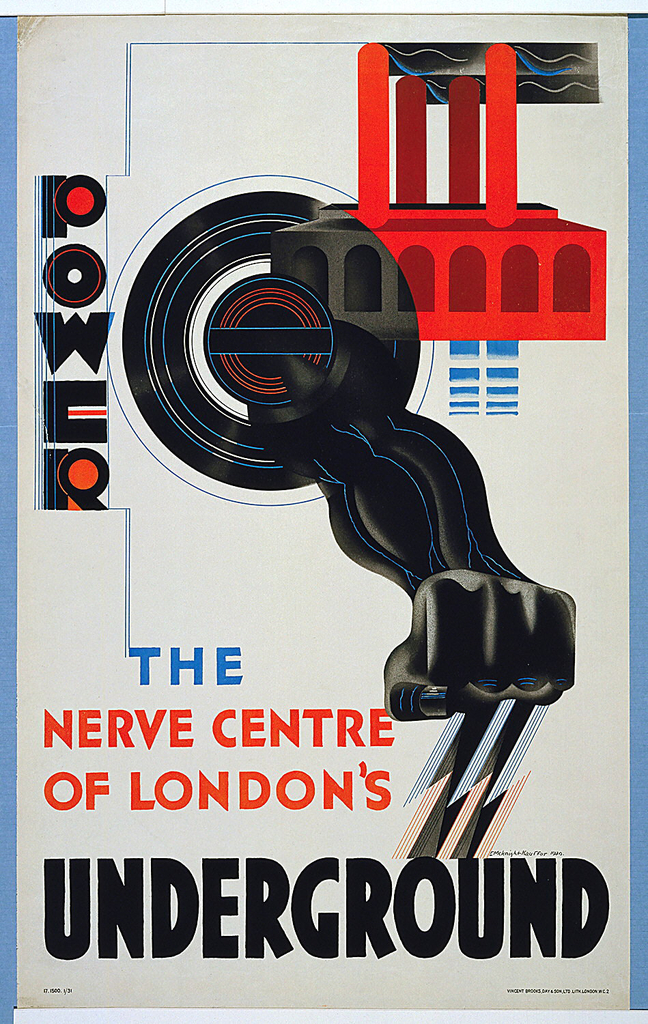London Transport posters played an indispensable role in the field of graphic design, particularly in the 1920s and 30s. In 1908, Frank Pick assumed responsibility for London Transport’s publicity and commissioned designs from internationally known artists as well as promising newcomers. Among them, a talented American poster artist and graphic designer, Edward McKnight Kauffer (1890-1954), helped...
Many graphic designers have explored the graphic possibilities of lithography by combining it with photography. Among those was E. McKnight Kauffer, an American designer who moved to London just before the First World War and stayed until the advent of the second. Kauffer often combined illustration with halftone reproductions of photographic elements, and he remained committed...
The Curwen Press got its start in east London in 1863 as a music publisher. The scope of the business expanded and in 1920 began including book publishing and artist prints. It was at this time that the Curwen Press made contact with the Royal College of Art and began commissioning young artists, among them...
When it was introduced to London in the 19th century, the first underground railway was revolutionary. Able to provide quick, uninterrupted travel for commuters and easy access to the bustling city from the suburbs, the London Underground promised a better, more efficient future. It would take some convincing, however, to get the general public to...



